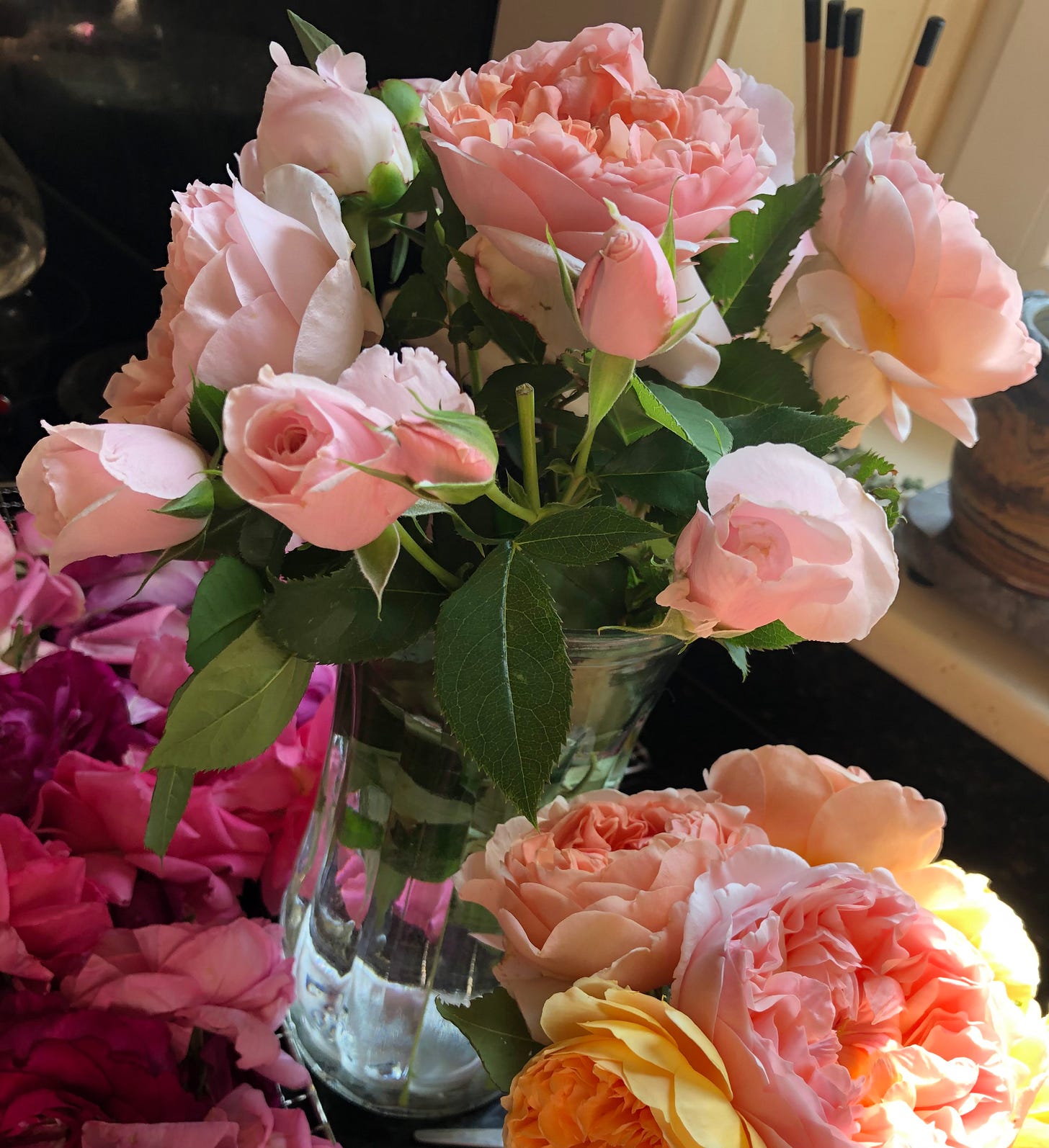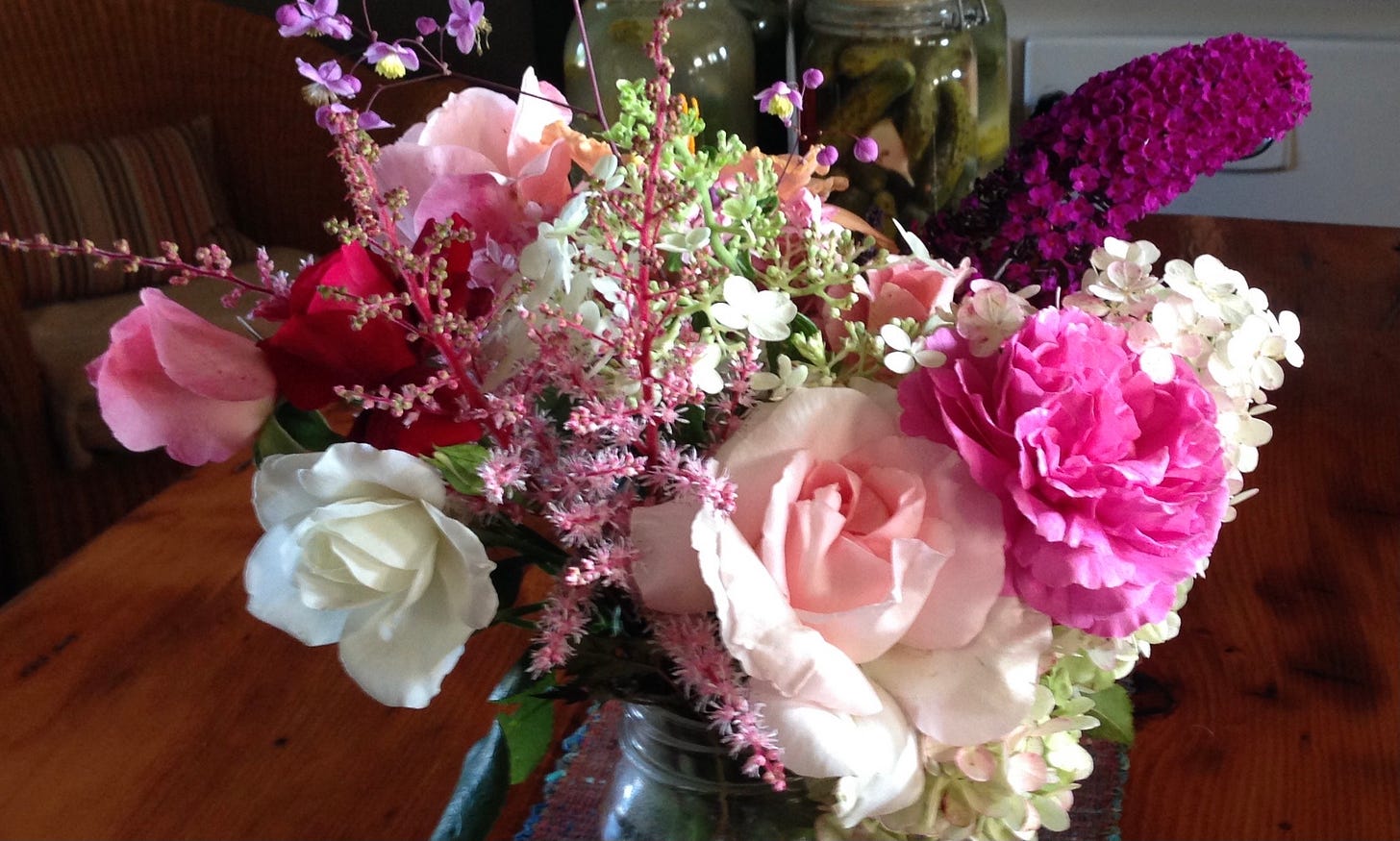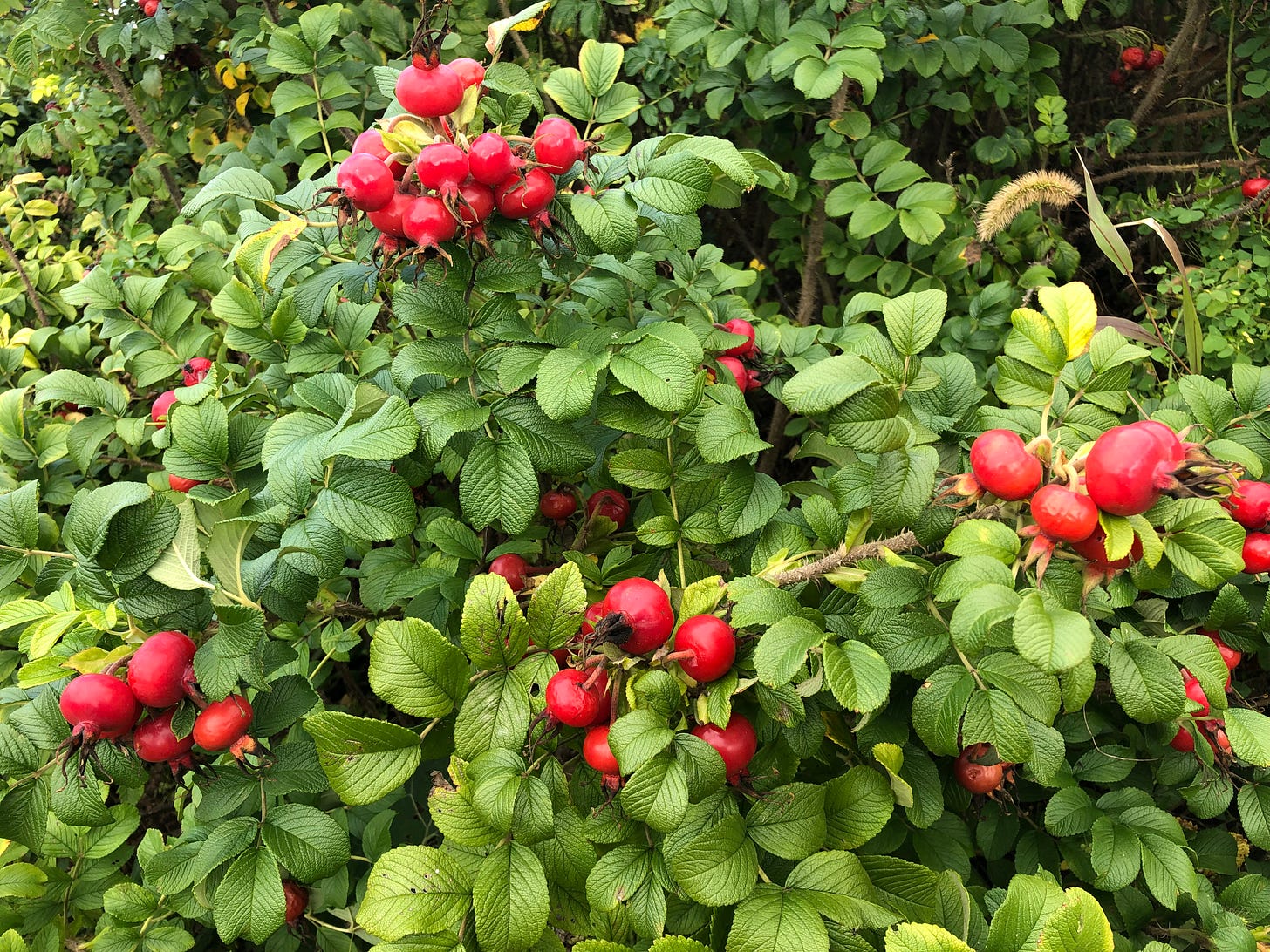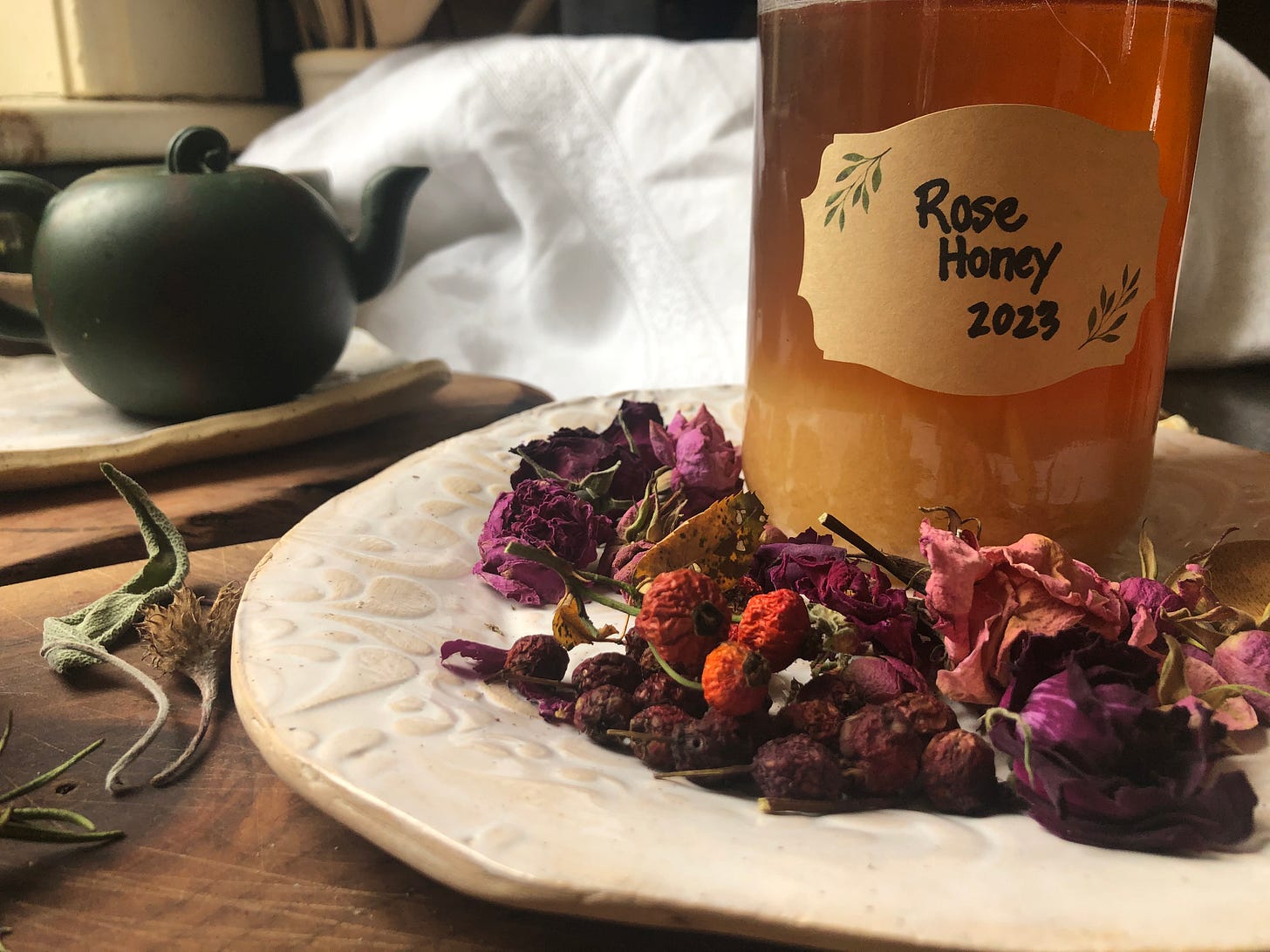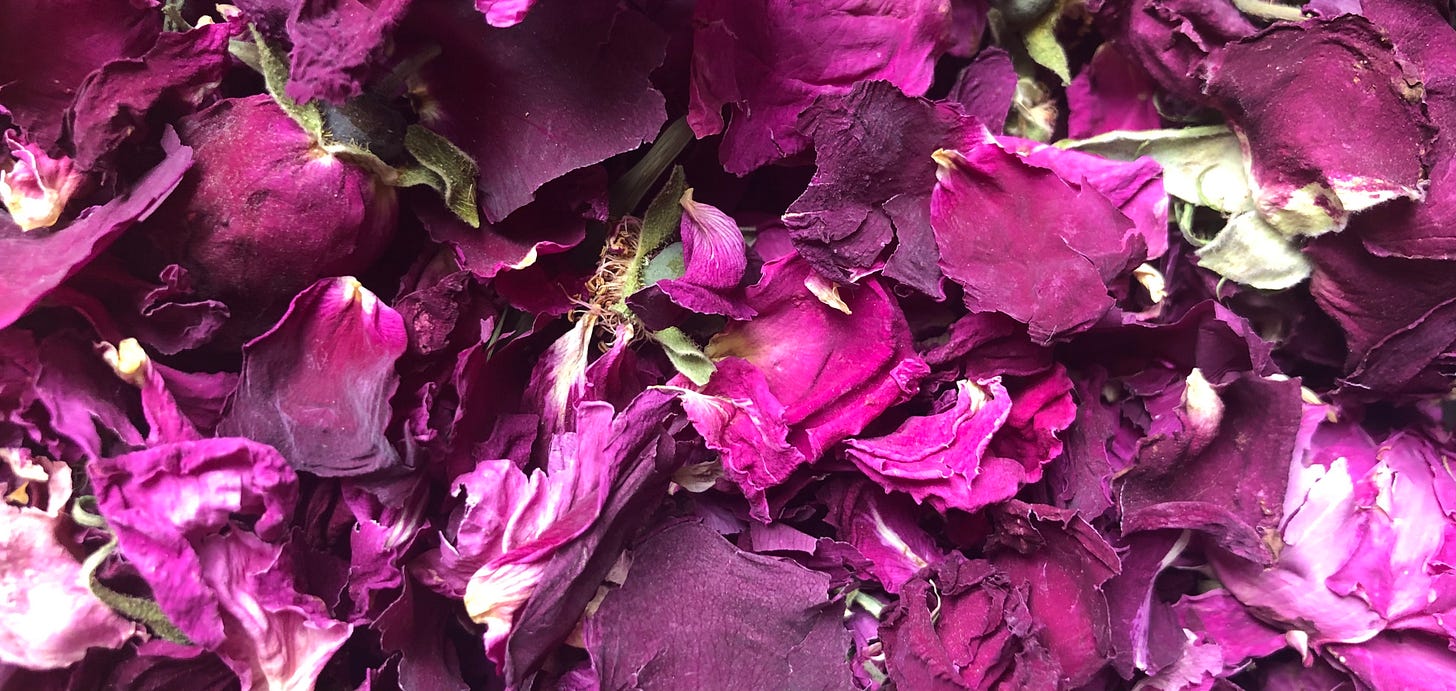Rose
You can access the audio here:
This week we are starting into our Women’s Health Series, as well as kicking of our weekly focus on plants that heal. There is no better plant to start with than Rose. Of all the plants that I have experienced, I believe she is the one that most deeply nourishes our feminine essence. Which is why she has become one of my favourites.
Cooling, moistening, nourishing and slightly astringent, Rose is best known for her affinity to the heart. In Ayurvedic medicine, Rose is considered tridoshic, which means that it’s good for everybody - or shall I say, neutral in its energetics and appropriate for anyone to use. And these past few years, we could certainly all use a good dose of Rose to get us through the challenges that we have been through.
Rose is of course, classically associated with love. And the Red Rose, a particularly passionate version of that love. Hence Rose is often considered an aphrodisiac. However Love is so much broader, and deeper and transformative than that limited image we often hold. And so is Rose.
In my experience, Rose is one of the most powerful medicines to nourish the feminine essence. It is profoundly yin in nature. It allows us to drop down out of the head and into the heart. A quality we deeply need in our world at this time and especially as women. She nourishes our heart and allows us to “see with the eye of the heart” so to speak. She is a wonderful plant to accompany us in times of grief and sorrow. And fill us up when the world at large has left us depleted and without hope. And while she is incredibly beautiful, with rose this beauty runs deep. It allows the beauty within our soul to express itself out into the world.
Rose lifts our spirit and reduce anxiety. Rose helps to calm excess heat and is especially indicated for a person with a slightly red and moist tongue. Helpful to reduce pain and inflammation. Rose can also calm heart palpitations and reduce nervous tension. She stimulates digestion and helps increase bile production. Rose strengthens the kidneys and is a blood tonic and menstrual regulator.
For years I had a kind of love-hate relationship with rose. The main way she would show up in my life was the diazinon-sprayed, long-stemmed red version - probably imported from Ecuador, or Kenya, on or about mid February. Know what I mean? And you see, I’m not really a Hallmark kinda gal. So when someone brings me roses because the consumer driven frenzy of our world says they should, it does not strike a particularly resonant chord with me.
My all time favourite Valentine’s gift ever received by the way, was a bouquet of carrots with green tops and all, presented to me in a vase. Yeah, you guessed it, that was from John, and that was quite a few years ago ;) It was his response to my issue with roses in February.
As many of you know I have the extreme good fortune of being married to a guy that is… well, what can I say, among many other things - a Rose whisperer. Until I met John, I had no idea roses could be this good. I had no idea that roses were meant to smell like ROSES, not diazinon. For those of you that know John and have ever experienced one of his magical rose-infused bouquets - you know what I mean.
And so from roses, come rosehips, which brings me full circle back to the breakfast table of my youth, where rosehip jam was a regular feature. When I was envisioning the gardens I wanted to create around my home many years later, it was the tidy Dutch gardens with their massive hydrangeas and glistening rosehips that inspired me. So off I went to Greenbelt Farm to find me some. That’s where my deep love of Roses and of John began. Rosehips. Little did I know what I was getting myself into. Roses.
My foray into medicinal plants began in the mid 90’s when I was fortunate enough to spend a few weeks of my summers on Swan’s Island, off the coast of Maine, immersed in learning the plants. This part of the world runs rife with wild roses, misted by the ocean spray. During this time I was blessed to meet a wonderful forager and herbalist who introduced me to rose petal jam. It was sublime. You can find a recipe here.
Many years later, on a road trip to the Gaspe and the East Coast we harvested magnificent rose hips reminiscent of those Swan’s Island beauties that we eventually propagated here in Ontario.
Over the years, Rose has come to me in various other guises, whether is was the gift of a beautiful bottle of Rose Syrup imported from Italy, a Rose Glow Serum that made my heart sing, or a Cleopatra-inspired Rose bath with milk and honey. These days, dried Rose petals make it into my teas on an almost daily basis. I also make numerous Rose infused tinctures and glycerites including the most prized of all my medicines - a Rose petal honey.
If you feel drawn to roses and want to experience their true exquisiteness, and are not really feeling it when it comes to a bouquet of commercially imported roses, you might want to nudge your partner in the direction of some other version that rose might take in your life. If you are a guy reading this post, do check in with your lady before assuming she sees roses the way I do. Most women have never experienced roses the way I have and are most appreciative of a beautiful bouquet ANYTIME of year, regardless of their origins or scent ;)
Here are a few ways you might want to bring rose into your life, until Winter gives way to Spring and you can plant a beauty in your garden:
Various rose and rosehip imbued teas are available from Karen at Tea Leaves (wait till next week as she is away at the Toronto Tea Festival this weekend 🫖 )
You can also get rosehips from Almut at Pfennings in St. Agatha, although her rose petals are out of stock at the moment. Rosehips are a delicious, slightly tangy addition to a tea blend, often adding a lovely complement to the overall flavour of a tea.
If you want to try some rosehip jam and don’t have the rosehips, or the time and patience to make it yourself, Food Basics carries a rosehip jam from Croatia in their ethnic foods section
Rose water or a Rose Hydrosol can be a lovely way to experience the magical aroma of rose. Quality makes a difference. They are not all created equal. I like Alypsis as a place to source these kinds of products, but of course there are many others.
When it comes to essential oils, be aware that is takes a WHOLE LOT of plant material to make only a very small amount of essential oil. Not the most sustainable way to experience rose. And with essential oils comes the issues of solvent extraction which you want to avoid. While a Rose essential oil is a completely over the top indulgence, you will experience just as much enjoyment at a fraction of the cost (and a fraction of the environmental impact) with a quality Rose essential oil diluted in a base of jojoba.
Straight Rosehip oil is readily available at many health food stores and makes a great face care product, though lacks the scent of rose
The luxurious Rose Glow Serum I mentioned is available at the Little Green Grocery
To make your own rose infused beverage consider this Rose Petal Shrub recipe
If you want to experience the more subtle energetic and emotional effects of rose, consider a Rose flower essence.
If you are lucky enough to live near Kincardine, visit Heide’s beautiful flower stand during rose season to see if you might be blessed by one of her inspired creations
Again, most often, I just add rose petals to may daily tea. Rosehips also make a great addition to teas and tea blends.
The beautiful essence of Rose is hard to come by on the commercial market and can be expensive - as witnessed by the links I share above. If you are feeling a hunkering for growing your own, here are notes from John about some horticultural aspects of rose, including a few varieties to seek out and a few places to source roses from. For those of you that have tried growing roses before and feel a bit intimidated by the prospect, I am going to bug John to write a post on caring for roses that we can eventually link to this article.
A LITTLE HORTICULTURAL BACKGROUND ON ROSES
Suffice it to say, that roses have evolved and existed for many centuries. Virtually all wild roses originated in the northern hemisphere, but were transported to many southern hemisphere countries over time. Just about all roses in cultivation today, are either the handful of wild roses such as Rosa rugosa, Rosa virginiana, Rosa carolina, etc .., or are hybrids of several parent strains. Several of the old wild roses that have continued to influence the modern roses with their scent along with other features are the Damask, Galicia, Centifolia, Moss, and Alba.
While there has been a great focus over the last few decades to breed roses with more disease resistance, more compact form, and almost continuous blooming (often referred to as “Landscape Roses”), sadly, most of those roses have lost the intriguing range of delicious scent that popularized roses in the first place. A few rose breeders, notably Austin and Meilland, continue to introduce roses worthy of burying your nose into.
SOME NOTABLE VARIETIES WORTHY TO SEEK OUT
Mary Rose (pink)
Madam Hardy (white)
Crested Moss - Chapeau de Napoleon (pink, silver reverse)
William Morris (apricot-pink)
Gertrude Jekyll ( pink)
Leander (peach-apricot)
Hansa (purple-red)
Mr. Lincoln (deep red)
Bolero (white)
Double Delight (red/cream)
All That Jazz (coral-orange)
Dark Desire (red)
Wasagaming rugosa (lilac-pink)
Bride (soft pink)
Yves Piaget (rich pink)
A FEW PLACES TO SOURCE ROSES TO PLANT IN YOUR GARDEN
Hortico in Waterdown
Rambling Rose in Picton
Palatine Fruit and Roses in Niagara
Cramer Nurseries in Quebec
CornHill Nursery in New Brunswick
And a small handful still available directly from John at Greenbelt




